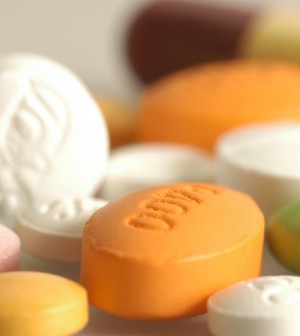- Understanding the Connection Between Anxiety and Depression
- How Daily Prunes Can Influence Cholesterol and Inflammation
- When to Take B12 for Better Absorption and Energy
- Epsom Salts: Health Benefits and Uses
- See What Saffron Can Do for Sleep and Heart Health
- 6 Common Mistakes to Avoid Before Your Physical
- Can Sweating Really Help You Beat a Cold?
- Strengthening Your Relationship: Practical Strategies
- Skip Storing This Everyday Product in the Fridge Door
- Green Tea + B3 Pairing May Boost Brain Health
Health Highlights: Feb. 25, 2015


Here are some of the latest health and medical news developments, compiled by the editors of HealthDay:
U.K. First to Approve Three-Person Babies
The United Kingdom is the first country to permit the creation of babies using DNA from three people so that mothers don’t pass certain diseases to their children.
The bill authorizing this approach was passed earlier this month by the House of Commons and received final approval Tuesday from the House of Lords, the Associated Press reported.
The procedure is meant to prevent children from inheriting defects in the mother’s mitochondria, which are the energy-producing structures outside a cell’s nucleus. Mitochondrial defects can cause diseases such as muscular dystrophy, severe muscle weakness and heart, kidney and liver failure.
In the procedure, an egg is altered before being transferred into a woman. Nucleus DNA is removed from the egg of a mother and placed into a donor egg from which the donor DNA has been removed. This can be done before or after an egg is fertilized, the AP reported.
The egg would then have nucleus DNA from its parents but mitochondrial DNA from the donor, which would account for less than 1 percent of the embryo’s genes.
This is a “monumental moment” in efforts to fight muscular dystrophy, according to Robert Meadowcroft, chief executive of the Muscular Dystrophy Campaign.
“This result will be life-changing for many women living with mitochondrial disease, giving them the precious chance to bear unaffected children, removing the condition from a family line and reducing the numbers faced with its devastating effects,” he said in a statement, the AP reported.
Critics say this approach crosses a fundamental scientific boundary because the genetic changes will be passed on to future generations.
At a U.S. Food and Drug Administration meeting last year, scientists said it could take decades to determine if this type of procedure is safe, the AP reported.
—–
‘Bionic Eye’ Enables Man to See Wife for First Time in Years
A new “bionic eye” enabled a 68-year-old American man to see his wife for the first time in a decade.
Allen Zderad of Minnesota appeared to laugh and cry at the same time as he got a glimpse of his wife of 45 years, CBS News reported.
Zderad has a degenerative eye disease called retinitis pigmentosa, which causes deterioration of the part of the retina that turns light into vision, eventually resulting in total blindness.
He is one of just a few people worldwide to get the recently developed implantable device called the Second Sight Argus II retinal prosthesis system. The device was implanted at the Mayo Clinic.
“It’s pulsing light, it’s not like regular vision where it’s constant,” Zderad told his wife and the Mayo doctors, CBS News reported. “It’s the flash, and I’ve got to be able to interpret the changes in that shape.”
The device doesn’t restore normal vision. It features specially-equipped glasses that enable a patient to see light and the silhouettes and contours of objects and people.
The Second Sight Argus II became available in the United States in 2013. Last October, a 66-year-old man received the device at Duke Medicine, CBS News reported.
Copyright © 2026 HealthDay. All rights reserved.










